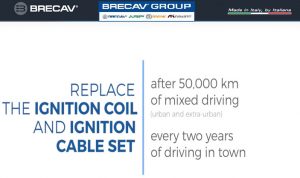Engine performance in general, fuel consumption in particular. If you start to feel that you are getting fewer miles on a full tank of fuel it is time to check the ignition cables. Surely you have noticed the decrease in power especially when overtaking, it is especially in those moments that you can better perceive the wear of the product.


Checking the wear of the ignition cable is not of immediate perception. In the past with PVC or hypalon cables the outer sheath vulcanizes.With modern silicon cables this rarely happens, so when installing new cables it is necessary to note the date and the kilometers in order to check them after two years if the vehicle has only urban routes, every 50,000 km if the vehicle has mixed routes, says the Head of Customer Care and Assistance Palma Losignore who is in Brecav since 1996.

The engine light comes on, what happened? It could be the normal degradation of the product, the inside of the conductor of the spark plug cable, not visible from the outside, is crossed by high-voltage electricity constantly, during the ignition phase of the engine and not only when running. It may have been subjected to an unwanted “tear” for a spark plug change, which happens very often for the hot disassembly of the same spark plug cables with outer silicone sheath. Rodents are very fond of electric cables, therefore also of ignition cables, and the system could have been attacked by rodents. The spark plug terminal must “click” otherwise it could generate a discharge.
The signals that come to us to check the degree of wear or problem for the spark plug cables are: increased fuel consumption, rough engine idling, loss of engine performance, reduction of power especially in extra urban routes and over tension of the engine.